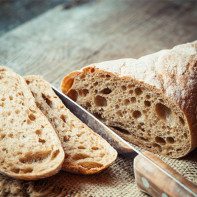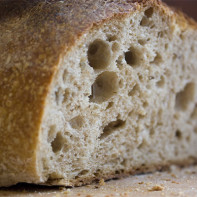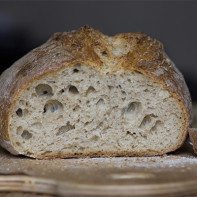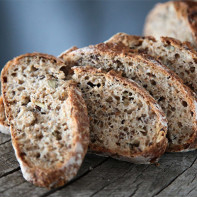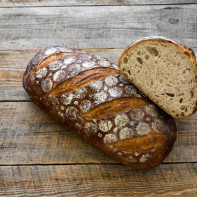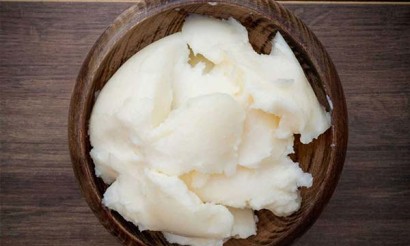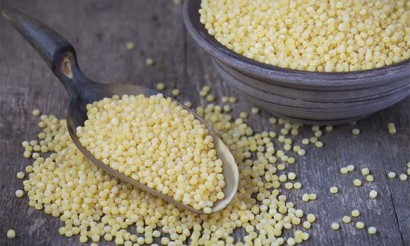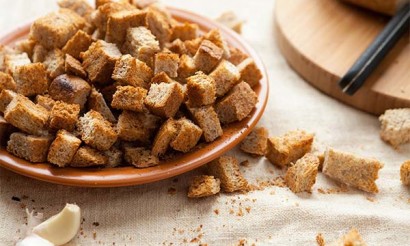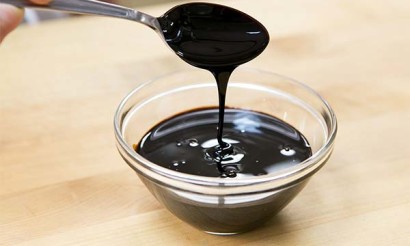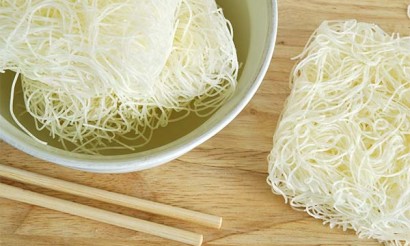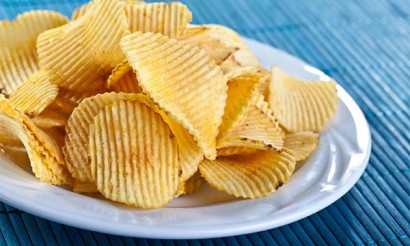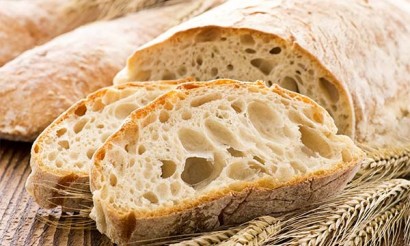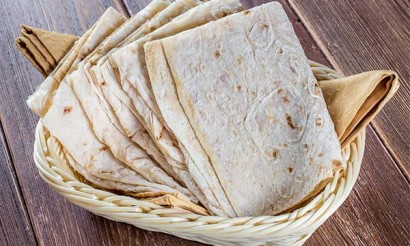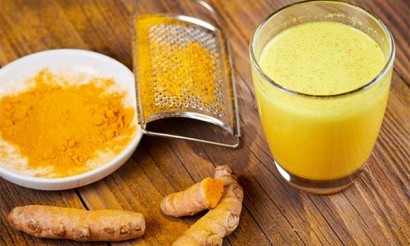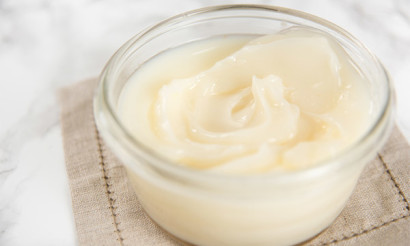Unleavened bread: calories, useful properties and harm
In today's world there are a lot of newfangled trends. These trends also affect the choice of food. In particular, supporters of a healthy lifestyle, which was now a fairly large number, actively promoting the idea that is much healthier to eat not the usual bread, which is prepared using yeast, and yeast-free. They explain this by the fact that this product is much healthier, and it is advisable to use it when losing weight.
- What is the difference between yeast-free bread and yeast bread
- Which one is healthier
- Composition and calories
- What is the usefulness of yeast-free bread
- General benefits
- For Women
- For Men
- While pregnant
- For breastfeeding
- For children
- When losing weight
- Bread without yeast in medicine
- Diabetes mellitus
- In pancreatitis
- For gastritis
- For Intestines
- Hazards and contraindications
- How to choose and store yeast-free bread
- How to make yeast-free bread at home
- How to make sourdough
- In the bread machine
- In the oven
- In a multicooker
- Interesting facts about bread
Yeast-free bread really has a lot of useful elements that have a positive effect on the human body.
What is the difference between yeast-free bread and yeast bread
In fact, bread made with the use of yeast is almost no different in appearance from a product that is made without the addition to the dough of special bacteria that cause the effect of fermentation. But it is this main difference that affects the properties of the product, its effect on the body.
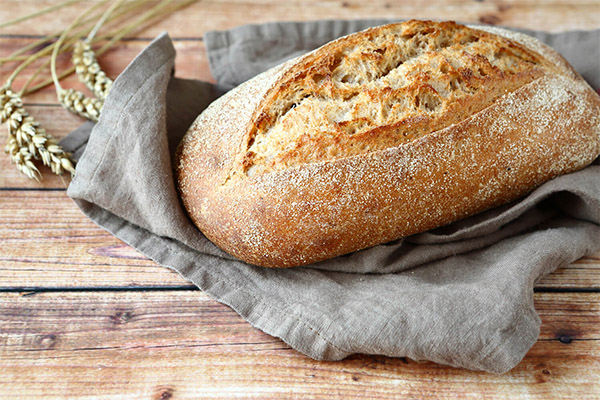
Bread made with natural sourdough keeps longer than ordinary bread, it takes longer to become dry and stale. But there is no denying the fact that yeast bread is softer and more fluffy.
An important difference in bread is the cooking time. For muffins that are made with sourdough, it takes much longer, because you have to wait for the dough to rise, and this takes about a day. By the way, this is why yeast began to be used in the preparation of baked goods, because the dough rose much faster (about 3 hours).
Which is healthier
Yeast-free bread has a better effect on the human body. It promotes fast intestinal function and cleanses unwanted toxins. Many people think that yeast, which are living organisms and need vitamins, proteins and other useful substances, getting into the body, just takes them away from the person. Another disadvantage and difference of yeast bread is that yeast bacteria cause fermentation and flatulence in the human body.
Bread made with sourdough contains lactic acid bacteria, which are responsible for a slight sour taste, which yeast bread does not have.
Composition and calories
Yeast-free baked goods have health benefits because of their composition.
The minerals found in yeast-free bread are:
- Phosphorus, which helps synthesize proteins;
- iron, which lowers the hemoglobin in the blood;
- Zinc, which increases testosterone in males;
- calcium, which helps strengthen bones;
- Fluoride, which protects and makes teeth stronger;
- Potassium, which affects active brain activity.
Vitamins found in yeast-free bread:
- Group A. They affect the improvement of the visual system, protein synthesis in the body, improve metabolic function, and strengthen cell walls.
- Group E. Vitamin E is an important antioxidant for the body. It is responsible for slowing aging, strengthening cell membranes, improving blood circulation, and preventing the development of cancer cells.
- Group B. These vitamins are good for the nervous system, help strengthen the immune system, improve vision and break down nutrients that enter the body.
Yeast-free baked goods also contain nicotinic acid, which corrects blood cholesterol levels and produces hemoglobin. It contains dietary cellulose, which has a beneficial effect on digestion. In baked goods, which are prepared without the use of bacteria that cause the effect of fermentation, there is a large amount of fiber, which again has an excellent effect on the metabolism, cleanses the body of toxins.
The caloric value of this product varies depending on the type of flour: rye or wheat. The caloric value in black bread made from rye flour is 199, while wheat bread is 225 kilocalories.
How is yeast-free bread useful?
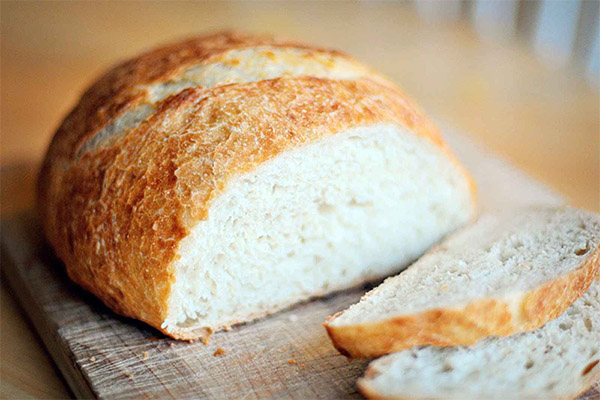
General benefits
- The product promotes improved and faster functioning of the gastrointestinal tract.
- The coarse dietary fiber contained in such baked goods has a good effect on the digestive system.
- Intestinal microflora becomes cleaner, freed from unnecessary toxins and waste.
- Baking made without the addition of yeast prevents problems with flatulence and bloating of the stomach.
- There is rarely a feeling of heartburn after eating yeast-free food.
- Thanks to potassium and magnesium, the bread product has an excellent effect on the cardiovascular system.
- Yeast-free bread is a low-calorie product, which is recommended to eat during a diet.
- The sourdough that is used in the preparation of such bread is much cleaner and does not contain harmful impurities, so it reduces the risk of poisoning and stomach disorders.
- The lactobacilli that are found in yeast-free bread are active and help the body better absorb the vitamins and minerals it needs.
- Both regular bread and yeast-free bread energize the human body.
For women.
As mentioned above, yeast-free baked goods are very high in vitamin E, which is good for the female body. Since vitamin E slows cell aging, bread made without the use of yeast bacteria is a true elixir of beauty and youth.
Vitamin E has a positive effect on the normalization of the menstrual cycle and increases libido. There is also vitamin B in this kind of bakery product, which is involved in the production of estrogen, the female sex hormone. Vitamin E is also involved in the planning of pregnancy and during the period of childbirth.
For men
Eating yeast-free baked goods is also good for men. The same vitamin B contained in this product helps to increase male sex hormone. In addition, it improves the quality of the male semen and fights the problem of impotence. This product also contains zinc, which also affects the increase in testosterone.
In pregnancy
During pregnancy, yeast-free bread will not be an unnecessary product in the diet. First, its use will eliminate problems with constipation and flatulence. And besides, as mentioned above, yeast-free bread contains vitamin E, which doctors advise all expectant mothers to take in order to facilitate pregnancy, reduce the risk of placenta detachment, protect against miscarriage and promote proper fetal development. But you should not go overboard with eating bread, because it has many negative qualities, which can have a bad effect on the woman and the baby.
When breastfeeding
During lactation or breastfeeding, you need to carefully introduce floury bakery products into the diet, so as not to cause digestive upset in the baby.
For kids
For children, yeast-free bread will be a treasure trove of various useful vitamins and minerals. For example, it contains calcium, which is great for strengthening bones. There is fluoride, which has its positive effect on tooth enamel. Bread made without yeast helps digestion, and the vitamin and mineral complex they contain actively helps the brain work.
For weight loss
As stated in the introduction to the article, yeast-free bread is often recommended by adherents of a healthy lifestyle, because the one is not only useful for the internal processes of the body, but also contributes to the loss of excess weight. Although this is not entirely true. Due to the fact that it contains a large amount of fiber, this product improves the metabolism, which helps rapid digestion and better absorption of all necessary microelements. More fiber, once inside the stomach, swells up, which provides a fast coming feeling of fullness. It is slowly digested in the body, as it is a complex carbohydrate, which affects hunger, which comes not long after eating this product.
But this does not mean that now you have to eat bread alone, buying it up in stores, as it certainly will not help with the reduction of excess weight. Rather, its main function will be the rapid onset of satiety, which will not allow overeating and a feeling of heaviness in the stomach. And to eat this product in moderation, because its oversupply in the body will have more negative consequences than positive. Nutritionists recommend consuming 100-200 grams per day for people who are overweight.
Yeast-free bread in medicine
Bread, which is prepared without the use of yeast, is an excellent preventive measure against many diseases. Above mentioned its properties to clean the intestinal microflora, to improve the metabolism, to participate in the improvement of the water-salt balance in the body. It also stimulates the production of female and male reproductive organs. Thanks to the vitamin and mineral complex, yeast-free bread improves the cardiovascular system.
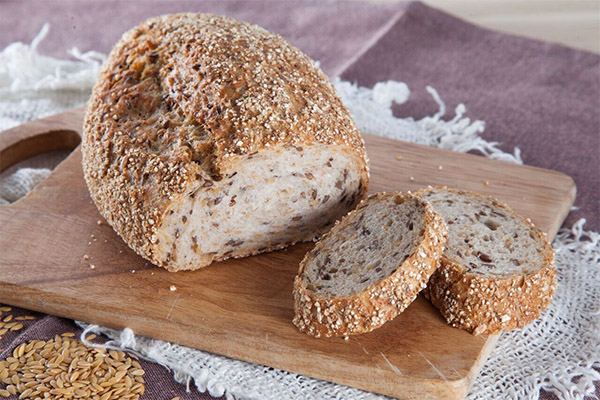
For diabetes
If a person suffers from such a disease as diabetes, then the use of yeast-free bread will be just right. All because such bread has a fairly low glycemic index. Black bread has 35 units, and white bread has 45 units. This will be an excellent alternative source of fiber. But you need to remember that bread, whatever it is, is a carbohydrate that can be dangerous for the body, so it is better to consult a doctor before using it.
In pancreatitis
It is very and very carefully to consume baked and floury products for people with such a diagnosis, because pancreatitis implies a strict diet, violation of which may result in not the most pleasant consequences. Only in periods of remission you can afford a small amount of yeast-free bread (about 100-150 g), but not every day, but several times a week.
In case of gastritis
It is not recommended to eat bakery products with gastritis, because they are carbohydrates, which the stomach will be very difficult to digest. Even yeast-free bread is not recommended by doctors to take in food, despite all its useful properties. After all, he is prepared on sourdough, where there is also the effect of fermentation, which is not very good for the gastrointestinal tract, which is affected by gastritis.
For the intestines
Baking, cooked without the use of yeast, has an excellent effect on the work of the intestines:
- First, it improves the metabolism, so that useful substances are absorbed more quickly by the person.
- Secondly, fiber, which is contained in yeast-free bakery products, contributes to the purification of all kinds of unnecessary toxins.
Harm and contraindications
Despite all the useful properties of yeast-free bread, there are still a number of drawbacks of this product and contraindications.
What harm does the use of yeast-free bread bring:
- No matter what the bread is made of, it is a flour product, and you should use it in reasonable quantities. Otherwise, you can get obesity, heart problems, diabetes or respiratory disorders.
- We must admit that yeast-free bread is not as tasty, soft and fluffy as bread made with yeast bacteria. It is much tougher, so people who have problems with their teeth should be very careful when eating such a product, otherwise you can make the situation worse.
- Many manufacturers go to all sorts of tricks, passing off their product as yeast-free. In fact, instead of sourdough, they use "wild" yeast, which has a negative effect on the human body.
Contraindications:
- acute pancreatitis.
- The presence of ulcers in the gastrointestinal tract;
- gastritis with high acidity;
- Various inflammatory processes in the intestines;
- intestinal obstruction.
How to choose and store yeast-free bread
When choosing bread, it is worth adhering to the following rules:
- You need to look for the bread, in the composition of which there is no sugar and honey.
- Naturally, it should be fresh, not long expired.
- When you press it with your finger, you should feel the elasticity.
- There should be no areas of mold on the bread.
You can store yeast-free bread in several ways:
- Even in ancient times, bread cooked on sourdough was wrapped in a linen towel. Even though the method is old, it really works. Many people have tested this fact and claimed that so the bread is stored from 14 to 19 days, retains its softness and taste. Of course, this is a myth, few products will keep that long, but still a dense linen cloth will really provide a long life of bread (about 7 days).
- The best way to store bread is at room temperature. Some people are used to keeping bread in the refrigerator, but this way it gets stale much faster and loses its aroma and flavor.
- If the bread was baked by your own hands, it is better to cool it for a few hours on a special rack.
- A wooden breadbox is a universal means of storing bread. In it the bread retains its freshness for a long time, does not stale and does not lose its useful properties.
- Storing bread in plastic bags is a big mistake. It is best to use paper ones, so it stays fresh and tasty longer.
Will yeast-free bread get moldy?
Unleavened bread will only get moldy if you do not keep it properly. For example, leaving it out in the open for a long time next to other products, which can also breed fungal growth.
Also, improper cooling after baking can contribute to the appearance of mold. Another source of fungal infestations can be the very place where the bread is stored - the bread bin itself, where a slice of old moldy bread might be lodged. You should always thoroughly wash and clean the food storage area to keep it fresh. If all the moisture has not evaporated from the bread during baking, this can also be the cause of mold.
How to make yeast-free bread at home
There are so many recipes for making yeast-free bread in the bread maker, multicooker, and oven. This article will introduce readers to some of them. But first you need to prepare a sourdough starter, which will take six days.
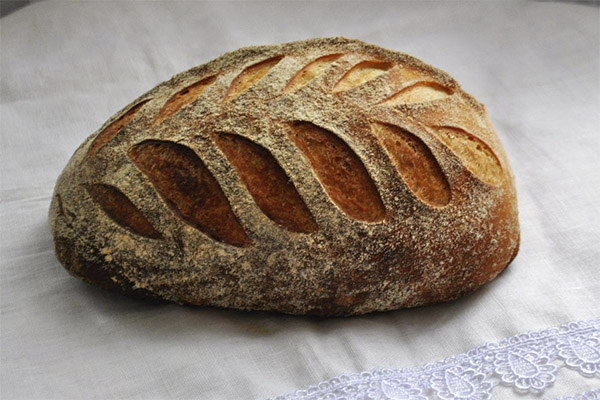
How to make sourdough
Ingredients:
- Flour.
- Salt.
- Sugar.
- Water.
Process:
- To begin, mix about 4 cups of flour and 2 cups of warm water. Mix all this mixture, cover with a thick cloth and put it in a warm place for 24 hours.
- In the next 24 hours, a sour smell will begin to emerge, as lactic acid bacteria emerge in the future starter. Again add about 50 g of flour and some warm water, mix and again send to a warm place for a day.
- On the third day, do the same thing.
- The fourth day repeats all the others. By this point, the dough will have the same smell as yeast dough.
- On the next day, the mixture will be loose. There add the same amount of flour and water.
- The sixth day is the last day. The dough will become puffy. Add flour and water again, and mix everything. Now all the obtained sourdough can be used in the preparation of baked goods.
In the bread machine
Thanks to modern household appliances, it is possible to prepare any bakery product very quickly and without much trouble. So you can make delicious yeast-free bread using kefir.
Ingredients:
- Kefir - 400 g.
- Salt - 1 tsp.
- Sugar - 1 tsp.
- Soda - 1 tsp.
- Wheat or rye flour - 400 gr.
- Sesame seeds.
- Vegetable oil.
Cooking process:
- In the bowl of the bread maker mix warm kefir with vegetable oil. Add salt, sugar and baking soda. Next, sift the flour through a sieve, and sprinkle sesame seeds on top.
- Put a fast baking mode, if there is no such, then first select the mode "Dough" for 10 minutes, and then the mode "Baking", which lasts 40 minutes. You can check the readiness of the bread with a toothpick. If there was not enough time and the dough is still raw, you can add 5-10 minutes.
- Then take out the resulting bread, wrap it in a thick cloth, give it time to cool.
In the oven
A simple recipe for making yeast-free bread in the oven.
Ingredients:
- Water - 1 cup.
- Flour - about 2-2.5 cups.
- Salt - 1 tsp.
- Sugar - 1 tsp.
Preparation Process:
- Make the sourdough starter described above, or another one that will take half as long to make. In a container mix a quantity of flour of 30-40 grams and water, which by volume will be ¼ cup. Cover all this with a thick cloth and place in a warm place for 24 hours.
- The next day add to this mixture another 50 grams of flour, and again put it in the same place for 24 hours.
- On the third day, mix in the remaining flour and water. Add sugar and salt.
- Knead the dough until it is homogeneous. Let it stand for 2-3 hours.
- Next comes the baking stage. Place the dough in a mold, greased with vegetable oil, and send it to the oven, which was preheated to 190 degrees. Bake for 40-50 minutes.
You can also use the recipe for delicious custard bread. For this you will need the following components:
- Butter - 1 tbsp.
- Sourdough - 9-11 tablespoons.
- Boiled water - 0,5 l.
- Flour - 1 kg.
- Salt - 1 tsp.
- Sugar - 2 tsp.
Preparation process:
- In the boiling water sift the flour, add salt, sugar. Mix the mixture.
- Wait until the mixture cools down a little, and add the leaven to it.
- Knead the remaining flour into the base of the bread.
- Leave the dough covered with butter for 1.5-2 hours.
- Preheat the oven to 180-200 degrees and put the dough there. After 35-40 minutes the bread will be ready. Let it cool down a bit and eat it.
In a multicooker
To make yeast-free bread in the multicooker, you will need the following ingredients:
- Wheat flour - 1-1.5 cups.
- Rye flour - 0.5 cups.
- Oat flakes - 0.5 cups.
- Butter.
- Sugar - 1 tbsp.
- Salt - 1 tsp.
- Soda - 2 tsp.
- Bread crumbs - 1-1,5 tsp.
- Kefir - 1-1,5 cup.
Cooking Process:
- To begin, melt the butter in a small bowl or saucepan.
- Pour into the container kefir and stir the resulting mixture.
- Add both types of flour, sifting them through a sieve. Then add the instant flakes. Add sugar, salt and baking soda.
- Stir everything together and give the dough some time to stand.
- Grease the bowl where you are going to bake with butter.
- Then pour breadcrumbs into the bowl and place the dough.
- Then close the lid of the device and set the mode "Baking".
- Bake the bread for about half an hour. Then turn it over and put it on the same mode again.
- After the next 30 minutes the baked goods will be ready. Place it on a plate, cover it with a thick cloth and let it cool.
For another delicious recipe for yeast-free bread in the multicooker you will need the following products:
- Sourdough - 1 tbsp.
- Sugar - 2 spoons.
- Salt - 1 tsp.
- Egg - 1 egg.
- Water - 200 ml.
- Vegetable oil - 1 tbsp.
- Sour cream - 3 tbsp.
- Flour - 800 gr.
Preparation process:
- First, to make the sourdough. Above indicated two ways of making sourdough. You can use either of them, or another way by mixing a small amount of flour with water, wrapping the resulting dough in clingfilm and putting it in a warm place for 3 days.
- On the third day, remove the top of the resulting mixture and throw it away. In a clean container add water and drop the dough there, sprinkling it with flour on top. Mix everything again, again wrap in clingfilm and send to a warm place for 12 hours.
- After 12 hours do the same, and then leave the dough in a warm place for 8 hours.
- Do the same steps until the starter is twice as big as the first kneaded dough. Basically, all this takes a week. Store the resulting sourdough in the refrigerator.
- Before baking bread, take the sourdough out of the fridge and let it warm up. Then take from there 1 tablespoon of the mixture, this is enough.
- Mix the sourdough with the eggs, add sugar and baking soda, then salt, vegetable oil and sour cream. Add flour until the dough becomes soft.
- Next, pour the flour on the table and roll the dough in it.
- Then leave the dough to stand. It will take about 1 hour.
- After that time, knead the dough and put it into a form, the bottom and walls of which have been greased with vegetable oil. Again leave the dough for 2 hours.
- After that, set the "Bake" mode on the multicooker. Bake for an hour and a half.
- After an hour and a half, when the multicooker will notify the end, turn the product and put it back on the mode "Bake" for 30 minutes.
- Allow the finished bread to cool slightly, and then you can eat it.
Interesting facts about bread
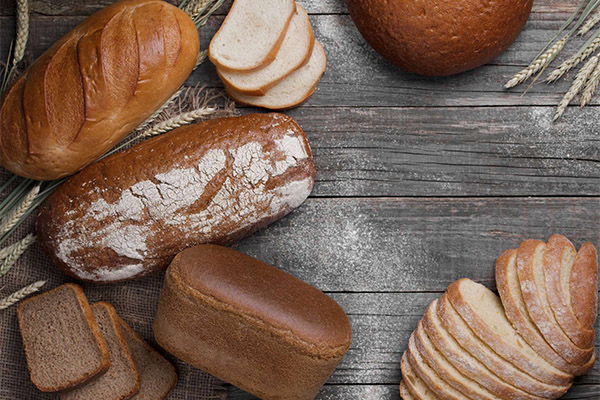
- The very first bread, surprisingly, was not made of wheat, rye or other grains, but from acorns.
- In the Middle Ages bread was not only a foodstuff, but it was also used as cutlery. Stale and withered slices of bread played the role of plates where food was placed. Afterwards, such utensils were given to pets to eat or thrown away.
- In ancient Egypt, bread sometimes served as the equivalent of money.
- The Russian people have always had bread as a symbol of hospitality and hospitality.
- In Great Britain there is a tradition of putting pieces of bread at the door of one's dwelling in the first hours of the New Year. In this way, people try to attract prosperity, wealth and comfort in the home.
- Bread made from rye flour is a good helper in the fight against the problem of anemia in the human body. It contains a lot of potassium and magnesium, which helps the cardiovascular system.
- The French have a patron saint of bakers and bakers, Saint Honoré.
- The first bakery in St. Petersburg was founded in 1704.
- Bread is a rather respected product in every home. Some nations still consider it a sin to throw away bread.
- In the refrigerator, bread becomes dry and stale much faster than at room temperature.
- October 16 is World Bread Day.
- The sandwich owes its origin to Earl Sandwich, who was a gambler and liked to play cards. It was he who invented to put meat between two slices of bread, so as not to get his hands dirty.
- This product saved many nations from starvation. During the blockade of Leningrad, it was bread that saved many people's lives. On the road of life, through Ladoga, small bricks were brought. One person was entitled to 125 grams of bread a day. It was made of wallpaper dust, sawdust and rye flour.
- Not so long ago in Kiev was baked the biggest loaf in the world, which weighed 150 kilograms.
- In the house-museum of Salvador Dali, the Spanish surrealist, there is a whole bread room. Every piece of furniture and element of decor is made of dough.
- In the Byzantine Empire, bakers who provided people with delicious and fragrant baked goods were exempt from taxes.
- In India, the worst offenders were deprived of bread. This was considered one of the lowest and most terrible punishments.
«Important: All information on this site is provided for informational purposes only. purposes only. Consult with your health care professional before applying any recommendations. specialist. Neither the editors nor the authors are liable for any possible harm caused by materials."

